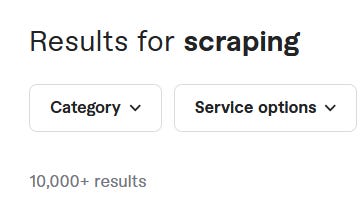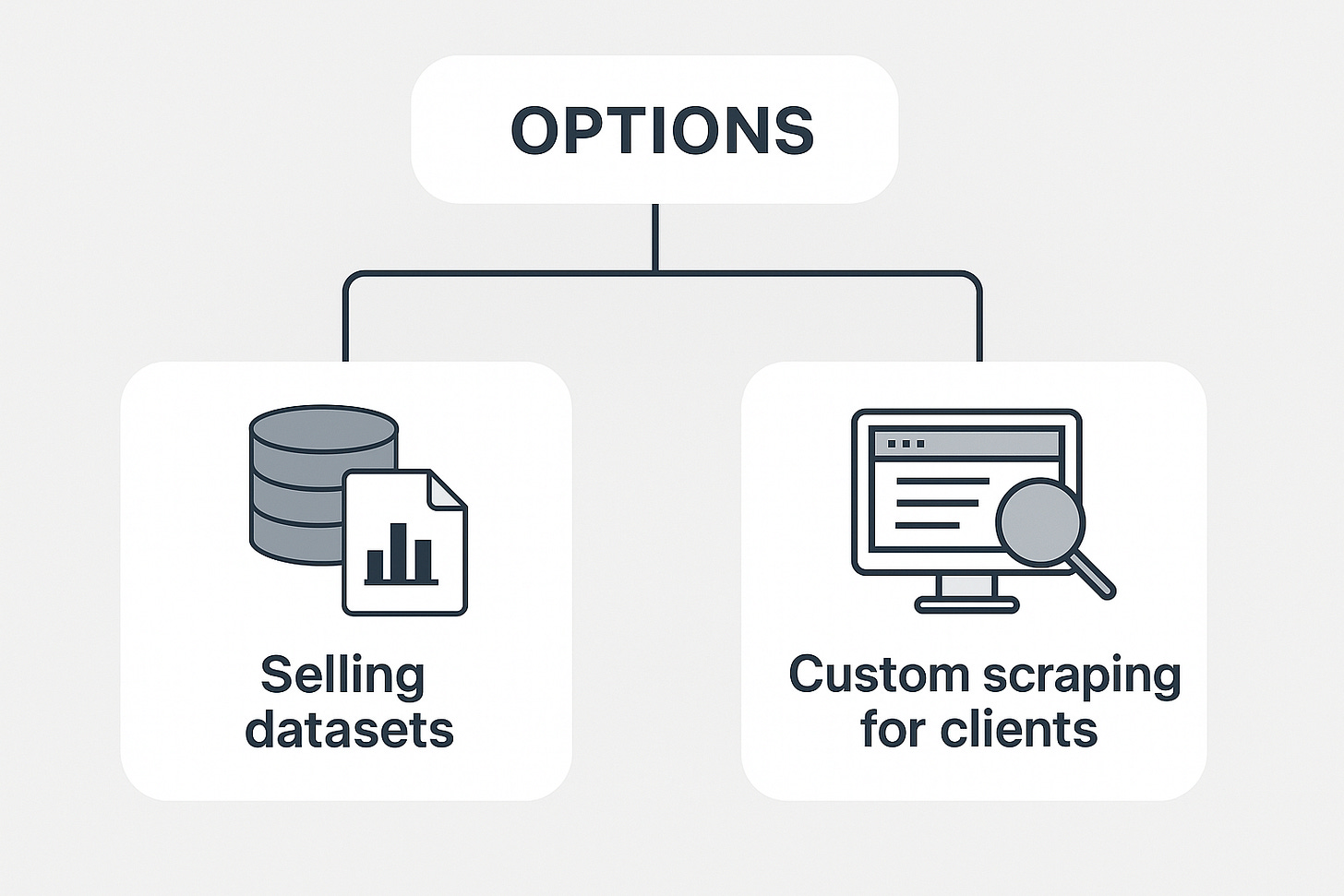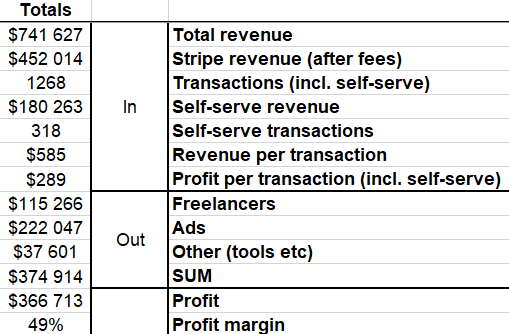Scraping in 2025: Still Worth Starting?
The scraping field isn’t dead - but success depends on where you focus and how you position yourself.
Scraping is a somewhat grey area.
The truth is, the companies that profit most from it aren’t small freelancers - they’re big players with deep pockets and expensive lawyers. They operate in the shadows, pushing the limits of legality, and they get away with it because they know how to balance it.
I really don’t want to give any examples or mention companies, so let’s talk about a fictional one: The Oxygene Group.
The Oxygene Group knows the ins and outs of the niche. They have the expertise to bypass protections, a strong legal team, and the ability to get away with scraping data that would otherwise violate the Terms and Conditions of the platforms they target. That’s why they’re profitable.
Even OpenAI’s CTO, when asked about the data used to train SORA, replied “I don’t know”. A non-answer that says a lot (who can know it if not chief technology officer?):
The reality? Much of it likely came from scraping in that same grey zone. And being upfront about it could invite lawsuits from the very platforms whose data was used.
So where does that leave the rest of us? If it’s unauthenticated (no login required) and you’re not collecting personal data, you’re generally good. If it’s authenticated (requires an account and logging in), you’re most likely violating Terms & Conditions.
But we’re not the big guys, and we didn’t start 10+ years ago when the market was less saturated. So a real question - if you want to start scraping in 2025, what are your actual options?
Let’s talk about it.
What Scraping Really Means
But first, let’s get on the same page on what is scraping.
Scraping is essentially the automated collection of data from websites. It can be as simple as pulling prices from an online store or as complex as extracting structured datasets from heavily protected platforms like LinkedIn or Airbnb.
Goal is to get as new as possible data set that can be used for many purposes (usually further data analysis and processing).
Different Ways to Go as a Solo Scraper
Getting back to the topic, from what I see, there are a few routes you can take:
Build your own scraping tool (SaaS) and sell subscriptions
Freelance on Fiverr/Upwork
Start a small scraping agency with heavy focus on ads for client acquisition
But of course, there’s one big prerequisite: you must know how to write good scrapers.
There are plenty of ready-made scraping tools, but they’re too basic. They work for small, unprotected sites, but try running them on Airbnb, LinkedIn, or other platforms and you’ll quickly hit a wall of defenses.
This is the cat and mouse game of scraping. You need to know how to mimic normal user flows, understand API endpoints, develop tactics that work, and accept that scrapers might stop working overnight.
But let’s say you have the technical side covered. How do you start as a solo developer?
Using Platforms Such as Apify, or RapidAPI
Platforms like Apify or RapidAPI handle the infrastructure for you: proxies, containers, scaling.
One big advantage is traffic. Your scrapers (actors) are published under their ecosystem, indexed by Google, and searchable inside Apify. That means some users will just find you.
But there are downsides:
Competition is intense on popular scrapers
Users scraping only a few items can spike infra costs and eat profits
You depend on the platform (your actor could be removed anytime
Mr. Scraper – solo builder’s project
Mr. Scraper was one of those “build in public” experiments that got attention in the niche. It was built by Kai.
The idea was simple: document the process of building scrapers, testing monetization routes, and sharing both wins and failures along the way. Instead of being another faceless API vendor, it leaned into transparency—showing code, revenue, and technical challenges in real time.
It was a self-service tool where users could run scrapers themselves.
Revenue? A few hundred bucks per month. Eventually it sold for around $15k (if I remember correctly - I can’t find the tweet).
On the surface, that looks like a success. But from the author’s blog posts, it was clear it required tons of effort and development hours.
Still, it showed that “building in public” can create visibility and opportunities, even if the business isn’t huge.
Freelancing
Platforms like Fiverr and Upwork show big demand for scraping.
But just like any other niche, there are plenty of people offering cheap work. The quality is usually low.
Starting from zero, you’ll compete with them. And building reputation takes time. But there’s money in it.
Fiverr alone has 10k+ scraping-related gigs.
Upwork has a steady stream of scraping jobs.
If I were starting from scratch, I wouldn’t go the freelance marketplace route. I’d rather do cold outreach. Something like:
“Hey, I see you run a webshop. I can send you a weekly report on what competitors are listing and how fast items go out of stock.”
That’s scraping packaged as data insights.
Scraping Agency: Scaling Scrapers with Ads
This is based on a real Flippa listing I found, which showed how one scraping agency operates.
The name of the agency is Scrapelabs.io.
This is how the business operates:
A non-technical founder handles clients and manages outsourced developers
Main client acquisition is via Google Ads
25% of revenue = recurring projects (ongoing data updates)
20% of clients are returning (most are new from ads)
Business requires ~2 hours/day
Profit margin = 56% (ads + freelancer costs included)
It makes money in two main ways:
Selling datasets and custom scraping E-commerce sites, the latter bringing in the most revenue.
At the time of selling it, the cash flow looked like this:
Revenue fluctuates a bit due to the reason that some clients make big orders.
The numbers (5 years):
$222k spent on ads
$115k spent on freelancers
$741k revenue
$366k profit
Ads took a huge share of expenses but were worth it.
The business started in 2020 with ~$3k monthly revenue from day one. Growth was slow, but by 2024 (best year):
$174,544 revenue
$83,098 expenses
$91,446 profit
$91k profit before taxes for ~2 hours of daily work (if you believe the owner) is solid.
but …
Some months were in negative (-6k), so cash flow management is crucial to in order to cover the operational expenses
It is hard to compete in this business without ad spend
If you’re not technical, learn the basics of scraping before hiring help. That way you’ll know why scraping LinkedIn is tough but scraping a small business site is easy - and you won’t overpay for simple work.
From there, focus on one niche, like Amazon. Niching down makes pricing clearer, ads more targeted, and competition easier to analyze. In 2025, success in scraping usually comes from going deep, not wide.
Resources for Learning
You won’t become an expert overnight. Solid technical background is what separates pros from amateurs.
If you’ve worked in a scraping company or on the anti-scraping side of a business, you’ll have a head start. If not, and you still want to get into scraping, here are some good entry points:
Any beginner tutorial (e.g. Codeacademy on YouTube for Python scraping basics)
The Web Scraping Club – deep, detailed newsletters (worth the paid version if serious)
r/webscraping – community discussions and problem-solving
Any AI chatbot – basically a personal tutor these days
Basic stack to start with:
requests + BeautifulSoup → lightweight basics
Scrapy → large-scale crawling
Playwright / Puppeteer → headless browser automation (Selenium still around, but fading)
httpx → modern async HTTP client (faster than
requests)
Scraping Isn’t the Gold Rush Anymore
Yes, scraping is lucrative. But does it make sense to start in 2025?
The best time was 10 years ago. Back then, the barrier to entry was low: anyone who knew how to automate requests and parse HTML could charge agencies or startups for data feeds. Now the field is saturated. There are dozens of SaaS APIs, cheap scrapers, and open-source libraries that cover most common use cases. Competing head-on with them is a race to the bottom.
The real question: where’s the market need today?
In 2025, the opportunity isn’t scraping itself.
It’s what you do with the data.
AI workflows are where the real leverage lies.
Companies don’t just want raw HTML or CSV dumps anymore. They want cleaned, enriched, contextualized information that can plug directly into decision-making. For example:
Lead generation → Not just scraped emails, but AI-filtered data with company size, funding stage, and intent signals.
Market research → Not just news feeds, but AI-summarized competitor moves across multiple languages and sources.
Fraud detection → Not just domain lists, but AI models that score the likelihood of a site being malicious. Just like the reports we provide with ScamRaven.
This is where small builders can thrive. Instead of trying to be the next Bright Data or ScraperAPI, pick a niche and convert messy raw data into something a human or business can act on immediately.
Scraping is still a component, but the real value is enriching the data.








